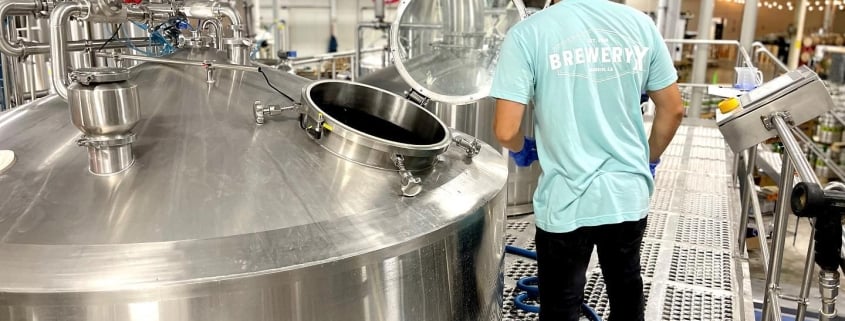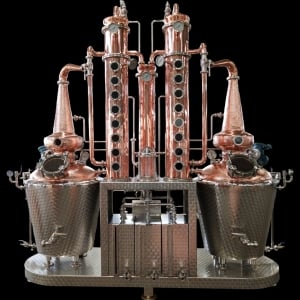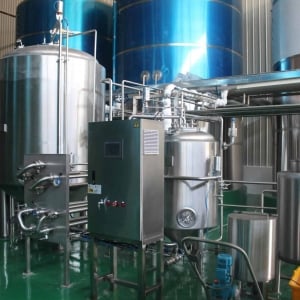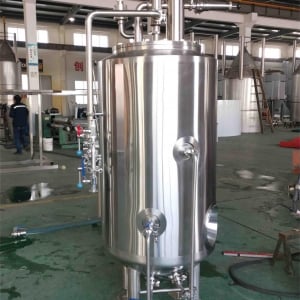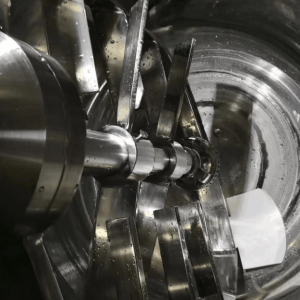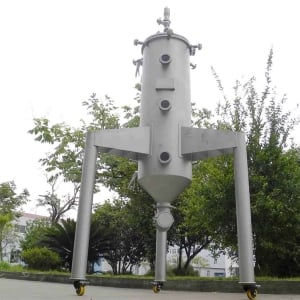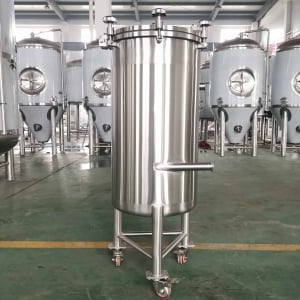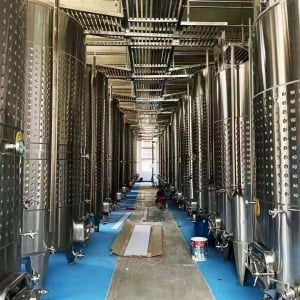Fermenters for Sale
Are you looking to dive into the world of fermenters? Whether you’re a homebrewer, a craft brewery enthusiast, or part of a large-scale commercial operation, understanding the ins and outs of fermenters can save you time, money, and ensure your brews are top-notch. This guide will walk you through everything you need to know about fermenters for sale, from different types and brewing processes to choosing the right supplier and understanding the pros and cons of each option.
Overview: Fermenters for Sale
Fermenters are essential vessels used in the brewing process to ferment beer, wine, and other alcoholic beverages. They come in various sizes, materials, and configurations, catering to different scales of production. The primary function of a fermenter is to provide a controlled environment where yeast can convert sugars into alcohol and carbon dioxide, creating the beloved beverages we enjoy.
Why Are Fermenters Important?
Fermenters are crucial for several reasons:
- Consistency: They ensure a consistent brewing environment.
- Control: They allow for precise control over temperature and other conditions.
- Quality: They help maintain the quality and flavor profile of the brew.
In this guide, we’ll break down the equipment you need, compare different types of fermenters, and provide a detailed analysis to help you make an informed decision.
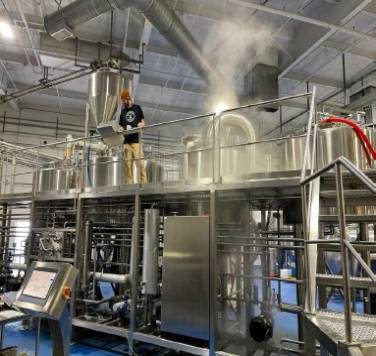
Types of Fermenters
Here’s a detailed look at the main types of fermenters you can find on the market:
| Type | Description | Best For |
|---|---|---|
| Plastic Fermenters | Affordable and lightweight, ideal for beginners and small batches. | Homebrewers |
| Stainless Steel | Durable, easy to clean, and offers excellent temperature control. Suitable for all brewing scales. | Homebrewers to Commercial |
| Conical Fermenters | Feature a cone-shaped bottom that allows yeast and sediment to settle at the bottom for easy removal. | Craft and Commercial Brewers |
| Glass Fermenters | Non-reactive and easy to sanitize, but fragile and heavy. | Homebrewers |
| Unitanks | Versatile fermenters that can also serve as brite tanks for conditioning and carbonation. | Commercial Brewers |
Choosing the Right Fermenter
Selecting the right fermenter depends on various factors including batch size, budget, and brewing goals. Here’s a closer look:
- Plastic Fermenters: These are perfect if you’re just starting out. They’re inexpensive and lightweight, making them easy to handle. However, they can scratch easily, which can harbor bacteria.
- Stainless Steel Fermenters: These are the gold standard for most brewers. They are highly durable, offer excellent control over the fermentation process, and are easy to clean. They do come with a higher price tag, but the investment is often worth it for serious brewers.
- Conical Fermenters: These are a step up, allowing for more efficient yeast management and clearer beer. The cone-shaped bottom lets you separate trub and yeast without transferring the beer to another vessel, reducing contamination risks.
- Glass Fermenters: These are great for those who want to avoid any potential taste alterations from plastic. They are, however, heavy and prone to breaking, which can be a safety concern.
- Unitanks: These are incredibly versatile and can be used for fermentation, conditioning, and carbonation. They are ideal for commercial brewers who need to maximize efficiency and space.
Brewing Process with Fermenters
Understanding the brewing process and how fermenters fit in is crucial for both home and commercial brewers. Here’s a step-by-step overview:
- Mashing: This is the process of mixing malted grains with hot water to extract sugars, creating a sugary liquid known as wort.
- Boiling: The wort is boiled and hops are added for bitterness, flavor, and aroma.
- Cooling: The hot wort is quickly cooled to a temperature suitable for fermentation.
- Fermentation: The cooled wort is transferred to the fermenter, yeast is added, and the fermentation process begins. This is where the magic happens – yeast converts sugars into alcohol and CO2.
- Conditioning: After primary fermentation, the beer may be transferred to another vessel or remain in the same fermenter for conditioning, which helps improve flavor and clarity.
- Packaging: Once conditioning is complete, the beer is packaged into bottles, cans, or kegs for consumption.
Table: Brewing Process and Fermenter Role
| Process Step | Description | Fermenter Role |
|---|---|---|
| Mashing | Mixing malt with water to create wort. | Not involved |
| Boiling | Boiling wort and adding hops. | Not involved |
| Cooling | Cooling wort to fermentation temperature. | Not involved |
| Fermentation | Yeast converts sugars to alcohol and CO2. | Primary role – fermenters house the wort and yeast |
| Conditioning | Improving flavor and clarity of the beer. | Secondary role – fermenters may be used or beer may be transferred to another vessel |
| Packaging | Bottling, canning, or kegging the finished beer. | Not involved |
Capacity, Space, Design, and Customization
When choosing a fermenter, considering its capacity, design, and the space it will occupy is essential. Here’s a breakdown:
Capacity and Space Considerations
The capacity of a fermenter will depend on the scale of your brewing operation:
- Homebrewers: Typically need fermenters ranging from 5 to 15 gallons.
- Craft Brewers: Often use fermenters from 1 to 20 barrels.
- Commercial Brewers: May require fermenters that hold hundreds of barrels.
Design and Customization
Fermenters come in various designs to suit different brewing needs. Customization options can include:
- Port Configuration: Number and type of ports for sampling, racking, and adding ingredients.
- Temperature Control: Built-in cooling jackets or external cooling systems.
- Agitation Systems: For mixing contents during fermentation.
- Pressure Ratings: Important for fermenters used in pressurized fermentations or those that double as unitanks.
Table: Capacity, Design, and Customization Options
| Parameter | Details |
|---|---|
| Capacity | Homebrewers (5-15 gallons), Craft Brewers (1-20 barrels), Commercial Brewers (100+ barrels) |
| Space Requirements | Depends on fermenter size and brewery layout. Larger fermenters require more space and headroom. |
| Design | Conical, cylindrical, or custom shapes to optimize brewing processes. |
| Customization | Ports, temperature control, agitation systems, pressure ratings. |
Suppliers and Price Range
When purchasing a fermenter, choosing the right supplier is crucial. Different suppliers offer various options, and prices can vary widely.
Popular Suppliers
Here are some popular suppliers and the price ranges they offer:
- SS Brewtech: Known for high-quality stainless steel fermenters suitable for homebrewers and commercial breweries.
- Blichmann Engineering: Offers innovative and durable brewing equipment, including fermenters.
- Spike Brewing: Provides customizable fermenters with excellent build quality.
- Craft Kettle: Specializes in commercial-scale fermenters and brewing systems.
Table: Suppliers and Price Ranges
| Supplier | Price Range | Specialty |
|---|---|---|
| SS Brewtech | $200 – $5,000 | Homebrewer and commercial fermenters |
| Blichmann Engineering | $250 – $7,000 | Innovative brewing equipment |
| Spike Brewing | $300 – $6,000 | Customizable fermenters |
| Craft Kettle | $2,000 – $50,000+ | Commercial-scale fermenters |
Installation, Operation, and Maintenance
Installing, operating, and maintaining your fermenter properly ensures longevity and optimal performance.
Installation
Proper installation is key to avoid any operational issues. Here are the steps:
- Site Preparation: Ensure the area is clean, level, and has adequate space.
- Positioning: Place the fermenter in its designated spot, ensuring all ports and controls are accessible.
- Connections: Attach any necessary hoses, cooling systems, and sensors.
- Sanitization: Thoroughly clean and sanitize the fermenter before use.
Operation
Operating a fermenter involves:
- Monitoring Temperature: Use built-in or external temperature controls to maintain optimal fermentation temperature.
- Sampling: Regularly sample the beer to monitor fermentation progress.
- Agitation: If your fermenter has an agitation system, use it as required to mix the contents.
Maintenance
Regular maintenance is crucial to keep your fermenter in top shape:
- Cleaning: Clean and sanitize after each use to prevent contamination.
- Inspection: Regularly inspect seals, valves, and other components for wear and tear.
- Repairs: Address any issues immediately to prevent further damage.
Table: Installation, Operation, and Maintenance Tips
| Aspect | Details |
| Installation | Site preparation, positioning, connections, sanitization. |
| Operation | Monitor temperature, regular sampling, use of agitation systems. |
| Maintenance | Clean and sanitize regularly, inspect components, perform timely repairs. |
Choosing the Right Supplier
Selecting the right supplier for your fermenter can be overwhelming. Here’s how to make an informed decision:
Factors to Consider
- Reputation: Look for suppliers with a good reputation in the brewing community.
- Customer Support: Ensure they offer excellent customer service and support.
- Customization Options: Some suppliers offer more customization options than others.
- Warranty and Returns: Check their warranty and return policies.
Table: How to Choose a Supplier
| Criteria | Details |
|---|---|
| Reputation | Research reviews and ask for recommendations from other brewers. |
| Customer Support | Ensure the supplier offers responsive and helpful customer service. |
| Customization | Look for suppliers that offer the ability to customize fermenters to your needs. |
| Warranty | Check the warranty period and return policy in case of any issues. |
Pros and Cons of Different Fermenters
Every fermenter type has its advantages and limitations. Understanding these can help you choose the right one for your needs.
Plastic Fermenters
Pros:
- Affordable
- Lightweight
- Easy to handle
Cons:
- Prone to scratches
- Can harbor bacteria
- Limited lifespan
Stainless Steel Fermenters
Pros:
- Durable
- Easy to clean
- Excellent temperature control
Cons:
- Expensive
- Heavy
Conical Fermenters
Pros:
- Efficient yeast management
- Reduces contamination risk
- Versatile for different brewing stages
Cons:
- More expensive than basic fermenters
- Requires more space
Glass Fermenters
Pros:
- Non-reactive
- Easy to sanitize
- Clear, allowing visual monitoring
Cons:
- Heavy
- Fragile
- Potential safety hazard
Unitanks
Pros:
- Highly versatile
- Can be used for multiple stages of brewing
- Saves space
Cons:
- Very expensive
- Requires significant investment
Table: Comparison of Fermenter Types
| Type | Pros | Cons |
|---|---|---|
| Plastic Fermenters | Affordable, lightweight, easy to handle | Prone to scratches, can harbor bacteria, limited lifespan |
| Stainless Steel | Durable, easy to clean, excellent temperature control | Expensive, heavy |
| Conical Fermenters | Efficient yeast management, reduces contamination risk | More expensive, requires more space |
| Glass Fermenters | Non-reactive, easy to sanitize, clear for monitoring | Heavy, fragile, potential safety hazard |
| Unitanks | Versatile, used for multiple brewing stages, space-saving | Very expensive, requires significant investment |
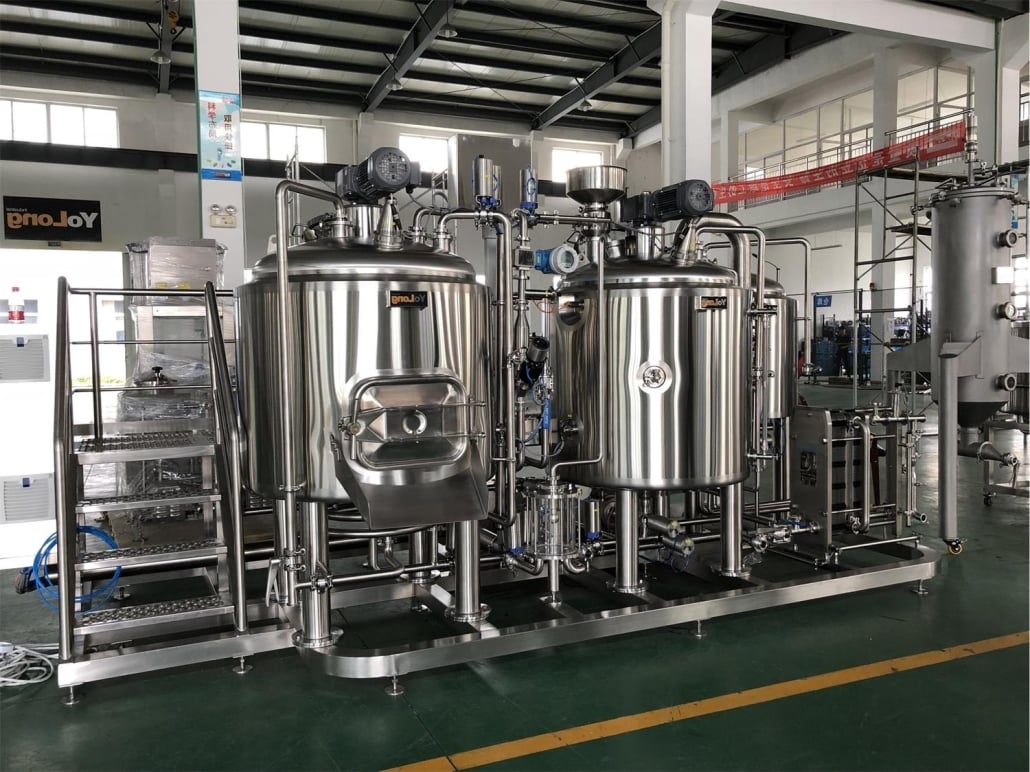
FAQ
| Question | Answer |
|---|---|
| What is the best type of fermenter for beginners? | Plastic fermenters are great for beginners due to their affordability and ease of use. |
| How do I sanitize a fermenter? | Use a brewery-approved sanitizer and follow the manufacturer’s instructions to ensure thorough cleaning. |
| Can I use a fermenter for both beer and wine? | Yes, many fermenters can be used for both beer and wine fermentation. Just ensure thorough cleaning between uses. |
| How often should I replace my fermenter? | It depends on the material and usage. Plastic fermenters may need replacing every few years, while stainless steel can last much longer. |
| What size fermenter do I need? | The size depends on your batch size. Homebrewers typically need 5-15 gallon fermenters, while commercial brewers may need much larger ones. |
| Are conical fermenters worth the investment? | Yes, especially for serious brewers. They offer better yeast management and reduce contamination risks. |
Conclusion
Choosing the right fermenter is a crucial step in the brewing process. Whether you’re a homebrewer just starting out or a commercial brewer looking to upgrade your equipment, understanding the different types of fermenters and their features can help you make an informed decision. Consider your budget, space, and brewing goals, and don’t hesitate to invest in quality equipment that will serve you well for years to come.

